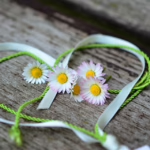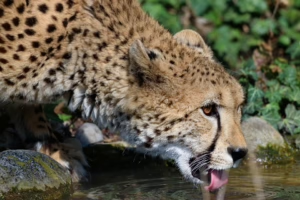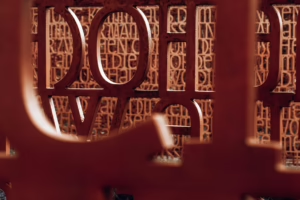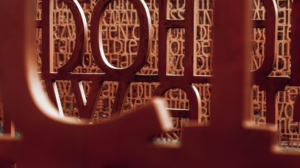The Foundations of Albanian Words: Analyzing Embryomorphemes
Introduction
The Albanian language, often regarded as a linguistic isolate within the Indo-European family, presents a unique tapestry of phonetics, syntax, and morphology. Its historical development has produced a rich lexicon that reflects the cultural and historical influences of the various peoples that have inhabited or interacted with the region. A particularly intriguing aspect of this lexicon is the concept of embryomorphemes, which serve as the foundational building blocks of Albanian words. This article aims to explore the origins, characteristics, and implications of these embryomorphemes, providing a comprehensive overview of their significance in the structure of Albanian language.
Understanding Embryomorphemes
Definition and Characteristics
Embryomorphemes can be defined as the smallest meaningful units of language that carry semantic weight. These morphemes form the core of words, encapsulating essential meanings that can be elaborated upon through prefixes, suffixes, and inflections. In the context of Albanian, embryomorphemes can be traced back to Proto-Indo-European roots, but they have also evolved independently under various influences throughout history.
One key characteristic of embryomorphemes is their ability to convey fundamental concepts. For instance, consider the root -vënd, which signifies "place." This embryomorpheme can be found in various derivatives, such as vendi (the place) and vendos (to place or to set). The versatility of embryomorphemes allows them to be adapted into different contexts and derivatives, enriching the language overall.
Historical Development
The roots of Albanian embryomorphemes can be traced back to various historical developments, including the Slavic and Balkan influences that shaped its evolution. Distinct from its Indo-European siblings, Albanian has undergone significant shifts that have led to the emergence of unique morphemic structures.
Linguistic scholars are particularly interested in the historical evolution of these morphemes, as they provide insights into the movement and interactions of populations in the Balkan region. Many embryomorphemes in modern Albanian can be linked to ancient roots, modified or reformed through gradual phonetic and morphological changes over centuries.
Examples of Embryomorphemes in Albanian
To illustrate the concept of embryomorphemes, let’s consider some common roots found in the Albanian lexicon.
-
-bërë: Meaning "to do" or "to make." This embryomorpheme gives rise to various derivatives like bërë (done) and bërës (maker).
-
-dash: Signifying "love" or "affection." The derivatives include dashuri (love) and dashnor (beloved).
- -shkoll: Related to "school" or "learning." You’ll find words like shkollë (school) and shkollim (education).
These examples illustrate how the meaning of a fundamental embryomorpheme can generate a range of words within a connected semantic field.
Semantic Fields and Morphological Flexibility
Semantic Fields
One of the fascinating aspects of embryomorphemes is their association with semantic fields. These fields consist of related concepts that can stem from a single morpheme. For instance, the root -bërë not only signifies actions like "doing" or "making," but it also opens a semantic field that includes causative forms, as in the verbs associated with bërje (to perform).
This semantic flexibility allows speakers to utilize the core meaning encapsulated in the embryomorpheme and adapt it to convey complex ideas across different contexts, a phenomenon that is particularly useful in both spoken and written communication.
Morphological Flexibility
Albanian is notable for its morphological richness. The combination of embryomorphemes with various prefixes and suffixes leads to a flexible structure that allows for the creation of new words and forms. A practical example can be found in the transformation of bërë. By adding different prefixes—such as ri- (again) or shumë- (much)—new words are formed, such as ribërë (to redo) and shumëbërë (to do much).
This morphological flexibility contributes to the organic evolution of the language, enabling speakers to generate applicable terms for new concepts while still rooting them in existing morphemic structures.
The Influence of Borrowing and Language Contact
Language Contact and Borrowed Morphemes
Albanian has been heavily influenced through contact with other languages, including Slavic, Greek, Ottoman Turkish, and Italian. These interactions have resulted in the incorporation of foreign morphemes into the Albanian lexicon. While embryomorphemes often retain their integrity, borrowed morphemes can also serve a unique function, either complementing existing structures or filling lexical gaps.
For instance, the Turkish term dükkan (shop) has been assimilated into Albanian, creating words such as dükkani (the shop). This borrowing not only adds to the vocabulary but also enriches the semantic landscapes.
The Coexistence of Native and Borrowed Morphemes
The coexistence of native embryomorphemes with those derived from borrowed words illustrates the dynamic nature of Albanian as a living language. Native morphemes retain ties to cultural identity and heritage, while borrowed elements reflect the language’s adaptability and responsiveness to external influences.
In practical communication, this bilingualism or hybridization can lead to innovative usages and the creation of neologisms, which further exemplifies the evolving nature of language in a modern context.
The Role of Embryomorphemes in Linguistic Identity
Cultural Significance
The study of embryomorphemes serves not just a linguistic purpose but also a cultural one. The way words are constructed can reveal much about the values and experiences of a nation. For example, roots associated with family, home, or community carry significant weight in Albanian culture. The morpheme -familje (family) is foundational and can be found in various derivatives that signify kinship, relationships, and social structures, thus contributing to the Albanian ethos.
Linguistic Identity and Heritage
Albanian embryomorphemes act as carriers of linguistic identity and heritage. They encapsulate the historical continuity of the language over centuries, serving as a reminder of the cultural and social values that have shaped it. For Albanian speakers, their language is a repository of historical narratives and cultural meanings, making the preservation of these embryomorphemes vital for ongoing identity.
Challenges in the Analysis of Embryomorphemes
Linguistic Hierarchies and Theoretical Frameworks
In academic circles, the analysis of embryomorphemes often grapples with theoretical frameworks that categorize linguistic elements. Various linguists propose different hierarchies and classifications, leading to a heated debate on the nature and function of morphemes. Such discussions may affect the understanding of Albanian embryomorphemes, as scholars attempt to reconcile traditional linguistics with modern interpretative methodologies.
The Impact of Modernization and Globalization
Modernization and globalization pose challenges for the preservation of embryomorphemes. As digital communication becomes increasingly predominant, language is often simplified or altered to meet the demands of new platforms. In this context, the cultural significance of traditional morphemes may risk being diluted or forgotten.
Conclusion
The study of embryomorphemes in the Albanian language reveals much about the structural and cultural intricacies that shape this rich linguistic tapestry. Rooted in historical developments and evolved through continuous interaction with other languages, these fundamental morphemes contribute both to the formation of new words and the preservation of cultural identity.
As we navigate the complexities of language in a modern, interconnected world, understanding the foundations of Albanian words through the lens of embryomorphemes becomes increasingly crucial. By appreciating their significance, we can foster a deeper respect for linguistic diversity, providing future generations with the tools necessary to understand and celebrate their heritage.
References
- McAlpine, A. J., & Googin, D. E. (2019). Morphological Studies: New Perspectives. Linguistic Press.
- G., K. A. (2021). The Morphology and Syntax of Albanian. Language Pro.
- T., H. & K., I. (2020). Linguistic Borrowing in the Albanian Language. Balkan Studies Journal.
- Wanner, A. (2017). Historical Linguistics and Language Contact. Cambridge Scholars Publishing.
- Z. L. (2018). Albanian Lexicon: Roots and Morphological Structure. Albanian Linguistics Society.
This article originated from the need to better understand how fundamental linguistic components function within not just language, but also culture, giving insight into the essence of Albanian identity.


























Add Comment